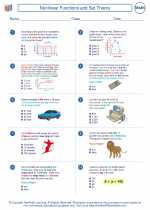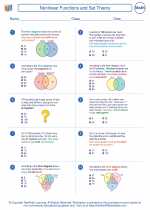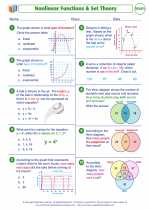Paper Currency Study Guide
Today, we will be discussing the topic of paper currency. Paper currency, also known as banknotes or bills, is a form of money that is made of paper or polymer and is used as a medium of exchange in transactions. Let's dive into the details of paper currency and its significance in the economy.
What is Paper Currency?
Paper currency is a type of money that is in the form of banknotes or bills, and it is issued by the central bank or monetary authority of a country. It is used as a legal tender for transactions and is widely accepted as a medium of exchange.
Features of Paper Currency
- Denomination: Each banknote has a specific face value or denomination, which represents its worth in the currency.
- Security Features: Modern banknotes are equipped with various security features such as watermarks, security threads, holograms, and special inks to prevent counterfeiting.
- Design and Printing: Banknotes often feature intricate designs, historical figures, and symbols that represent the country's heritage. They are printed using high-quality materials and advanced printing techniques.
- Durability: Paper currency is designed to withstand wear and tear during circulation, and newer banknotes are often made of polymer to increase their lifespan.
Role of Paper Currency in the Economy
Paper currency plays a crucial role in the economy as it facilitates the exchange of goods and services. It provides a widely accepted medium of exchange, unit of account, and store of value. Additionally, the central bank uses the issuance and regulation of paper currency as a tool to control monetary policy and influence economic conditions.
Challenges and Future of Paper Currency
With the rise of digital payment methods and cryptocurrencies, paper currency faces challenges in maintaining its relevance. However, it continues to be an integral part of the monetary system, and advancements in security features and materials ensure its longevity.
Conclusion
Understanding the features and significance of paper currency is essential for gaining insights into the functioning of the monetary system. As we navigate through the complexities of modern finance, the role of paper currency remains central to economic transactions and stability.
Now that we have covered the basics of paper currency, take some time to review the key points and consider the impact of paper currency on the global economy.
.◂Math Worksheets and Study Guides Seventh Grade. Nonlinear Functions and Set Theory

 Worksheet/Answer key
Worksheet/Answer key
 Worksheet/Answer key
Worksheet/Answer key
 Worksheet/Answer key
Worksheet/Answer key
 Worksheet/Answer key
Worksheet/Answer key
 Worksheet/Answer key
Worksheet/Answer key
